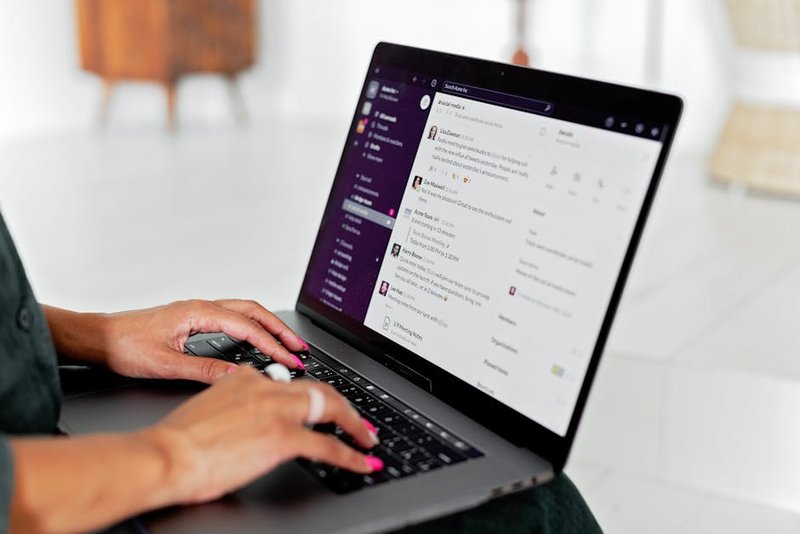I’ve spent twenty years of my life trying to understand Linux, and I’m pretty sure the operating system is laughing at me behind my back. You know that feeling when you’re the only one not getting an inside joke? That’s been my relationship with Linux since 1999.
For the uninitiated, Linux is that operating system your tech friend keeps insisting you should use while simultaneously typing commands that look like a cat walked across their keyboard. “It’s simple,” they say, as they execute something called “sudo apt-get install” for the fifteenth time in three minutes.
Linux – The WINE Situation: When Apples Try to Run Windows
The recent developments with Asahi Linux on Apple Silicon have created an interesting conundrum. Imagine buying a Ferrari and then wondering why it can’t tow your boat. That’s essentially what happens when users try running Windows applications on ARM-based Macs using Linux.
The confusion is understandable. One user recently discovered that VCDS, a Volkswagen diagnostic tool, has an ARM native version and was perplexed about why WINE (which stands for “Wine Is Not an Emulator,” in the most recursively nerdy naming convention possible) wasn’t readily available on Asahi Linux.
Here’s the reality: WINE version 10.0, released in January, does include some ARM64 support, but it’s about as stable as a house of cards in a wind tunnel. For the brave souls willing to venture forth, you have several equally terrifying options:
- Compile WINE from source with ARM64EC support (a process that involves sacrificing your weekend and possibly your sanity)
- Run Windows 11 ARM on QEMU under Asahi (labeled “heavily experimental,” which in Linux-speak means “good luck, you’ll need it”)
- Use Steam to run x86 applications (a solution that feels like trying to fit a square peg into a round hole using a banana as a hammer)

Linux – Microsoft Alternatives: Breaking Free From The Empire
Another common quest in the Linux world is finding alternatives to Microsoft’s ecosystem. It’s like trying to leave a cult where all your documents are stored in the temple vault.
For academia and research, viable alternatives to MS Office include:
-
LibreOffice: The Swiss Army knife of office suites. It’s free, it’s open-source, and it’s almost like MS Office if you squint really hard and have low expectations.
-
OnlyOffice: Offers better compatibility with Microsoft formats, which means your thesis won’t look like it was formatted by a hyperactive toddler when you share it with your professor.
-
WPS Office: The closest you’ll get to MS Office’s look and feel without sending money to Redmond.
As for OriginPro alternatives:
-
SciDAVis: Open-source scientific data analysis and visualization. It’s like OriginPro’s younger cousin who went to art school instead of business school.
-
GNU Octave: MATLAB-like environment that handles plotting and data visualization. It’s powerful enough for research but requires you to embrace your inner command-line warrior.
-
Python + Matplotlib/Pandas/NumPy: The holy trinity of scientific computing in Linux. Learning curve? Yes. Powerful? Absolutely. Will make you look like a wizard to non-technical colleagues? Definitely.
Understanding DNS Resolution: Or Why Your Internet Sometimes Just… Doesn’t
If you’ve ever wondered why your Linux machine can suddenly forget how to find Google.com, welcome to the mysterious world of DNS resolution. DNS (Domain Name System) is essentially the phone book of the internet, except it’s maintained by thousands of different entities who sometimes don’t talk to each other.
In Linux, DNS resolution follows a pathway that’s about as straightforward as a conspiracy theorist’s yarn wall. First, your system checks the /etc/hosts file, because apparently we’re still in 1985. Then it consults various resolvers, nameservers, and possibly a magic 8-ball before finally converting “google.com” into the IP address you actually need.
Kubernetes adds another layer of fun by implementing its own DNS service, CoreDNS. This means your container might have a completely different view of the DNS world than your host system. It’s like having two different maps for the same city, drawn by people who’ve never met.
The best part? When DNS fails, the error messages are about as helpful as “something went wrong” – the technical equivalent of shrugging shoulders.
VFIO: Having Your Linux Cake and Eating Windows Too
For those who want Linux but can’t fully escape Windows (perhaps you’re a gamer or use specialized software), VFIO (Virtual Function I/O) offers a compromise that’s both brilliant and slightly insane. It allows you to run Windows in a virtual machine while giving it direct access to your GPU, creating a near-native experience.
One recent convert described discovering VFIO as “falling in love.” I’m not sure what that says about their romantic standards, but it does speak to the liberation felt when you can maintain Linux as your primary OS while still playing games that developers never bothered to port.
Looking Glass adds another dimension by allowing you to see your Windows VM in a window on your Linux desktop without needing a second monitor or keyboard/mouse switching. It’s like picture-in-picture, but for operating systems.

The Tokio Conundrum: When Your Future Cannot Be Sent
Rust developers working with the Tokio async runtime sometimes encounter the cryptic error “future cannot be sent between threads safely.” This is Rust’s way of saying, “I’m protecting you from yourself, but I won’t explain how or why.”
The issue typically arises when you’re working with types that aren’t thread-safe and trying to move them across thread boundaries. It’s like trying to carry a house of cards through a tornado – technically possible, but probably not going to end well.
The solution often involves wrapping your non-Send types in thread-safe containers or restructuring your code to avoid crossing thread boundaries. It’s a perfect example of Linux/programming’s tendency to offer powerful tools with equally powerful ways to shoot yourself in the foot.
Final Thoughts: The Zen of Linux Understanding
After decades of Linux adventures, I’ve come to a profound realization: complete understanding is not the goal. Linux is not just an operating system; it’s a journey of constant learning, occasional frustration, and surprising moments of triumph when something actually works on the first try.
Think of Linux as that eccentric professor who’s brilliant but terrible at explaining things. You won’t always understand why something works (or doesn’t), but you’ll definitely learn something in the process of figuring it out.
And remember, when all else fails, there’s always the universal Linux troubleshooting sequence: update everything, reboot, and if that doesn’t work, pretend it was a feature all along. As we say in Linux land, “It’s not a bug, it’s an undocumented feature that will eventually make sense in a future release that may or may not happen.”



